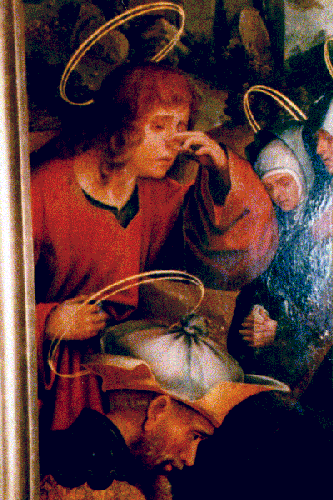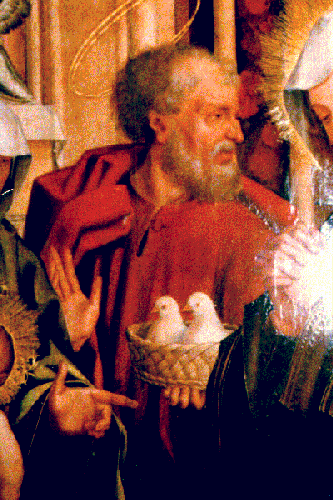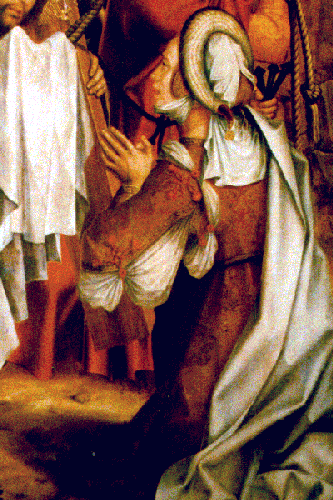|
| Tunics for Men and Women: Details from the Setúbal Altarpiece, Workshop of Jorge Afonso. 1520-1530 AD |



The tunic was the most standard part of the apparel, normally covering the undergarments, and visible below any outer garments. At its simplest, as shown in the detail from the Deposition panel, it was an almost unstructured garment of heavy woollen cloth, belted in at the waist and with a V-shaped slit to admit the head.
The detail from the Presentation of the Christ child in the Temple shows a single button to close this slit, as well as showing that the cloak or outermost garment could be worn directly over the tunic.
Men’s tunics were thigh-length, women’s tunics full-length. The detail from the Christ and Veronica panel shows brial (a dress, richly decorated, typical of the epoch): made of silk brocade probably imported from Italy or the Orient and enriched with fancy silk braids and fastenings, the arms are slit so as to reveal the chemise beneath, probably also of fine imported stuff.
© 1998 Oxfordshire Museum Service, Setúbal Museums and the Benaki Museum